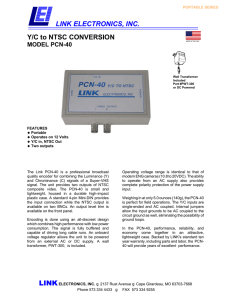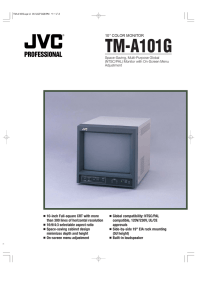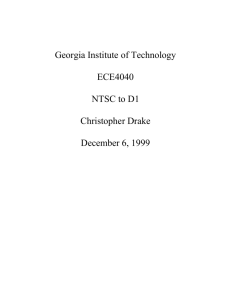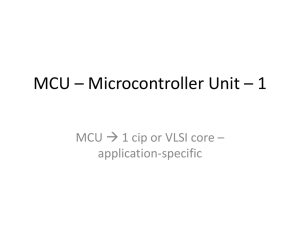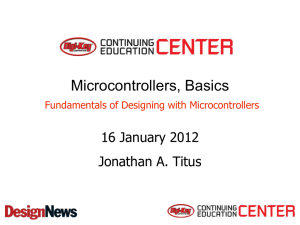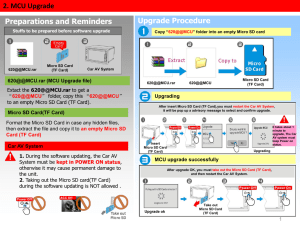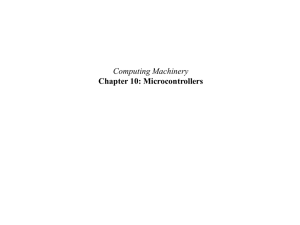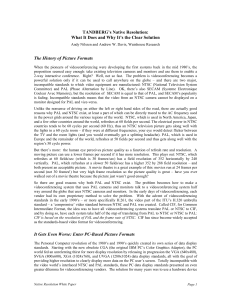poster
advertisement
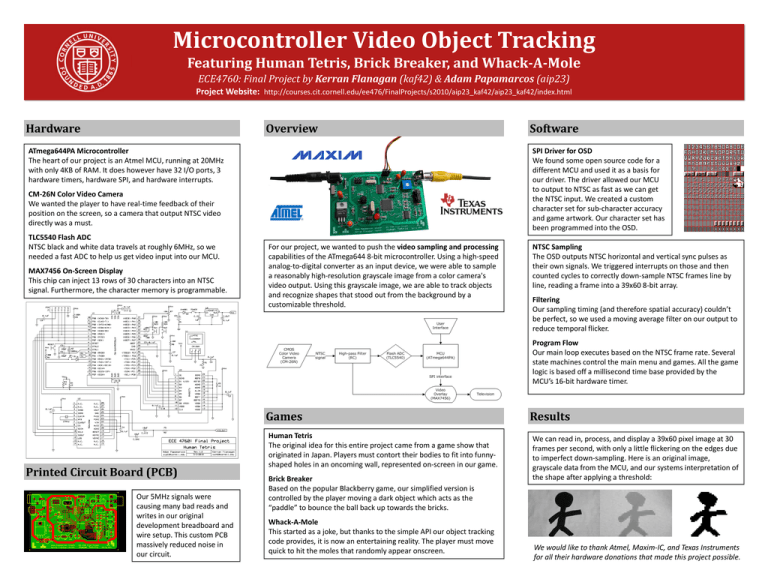
Microcontroller Video Object Tracking Featuring Human Tetris, Brick Breaker, and Whack-A-Mole ECE4760: Final Project by Kerran Flanagan (kaf42) & Adam Papamarcos (aip23) Project Website: http://courses.cit.cornell.edu/ee476/FinalProjects/s2010/aip23_kaf42/aip23_kaf42/index.html Hardware Overview ATmega644PA Microcontroller The heart of our project is an Atmel MCU, running at 20MHz with only 4KB of RAM. It does however have 32 I/O ports, 3 hardware timers, hardware SPI, and hardware interrupts. SPI Driver for OSD We found some open source code for a different MCU and used it as a basis for our driver. The driver allowed our MCU to output to NTSC as fast as we can get the NTSC input. We created a custom character set for sub-character accuracy and game artwork. Our character set has been programmed into the OSD. CM-26N Color Video Camera We wanted the player to have real-time feedback of their position on the screen, so a camera that output NTSC video directly was a must. TLC5540 Flash ADC NTSC black and white data travels at roughly 6MHz, so we needed a fast ADC to help us get video input into our MCU. MAX7456 On-Screen Display This chip can inject 13 rows of 30 characters into an NTSC signal. Furthermore, the character memory is programmable. Software For our project, we wanted to push the video sampling and processing capabilities of the ATmega644 8-bit microcontroller. Using a high-speed analog-to-digital converter as an input device, we were able to sample a reasonably high-resolution grayscale image from a color camera's video output. Using this grayscale image, we are able to track objects and recognize shapes that stood out from the background by a customizable threshold. NTSC Sampling The OSD outputs NTSC horizontal and vertical sync pulses as their own signals. We triggered interrupts on those and then counted cycles to correctly down-sample NTSC frames line by line, reading a frame into a 39x60 8-bit array. Filtering Our sampling timing (and therefore spatial accuracy) couldn’t be perfect, so we used a moving average filter on our output to reduce temporal flicker. Program Flow Our main loop executes based on the NTSC frame rate. Several state machines control the main menu and games. All the game logic is based off a millisecond time base provided by the MCU’s 16-bit hardware timer. Games Printed Circuit Board (PCB) Our 5MHz signals were causing many bad reads and writes in our original development breadboard and wire setup. This custom PCB massively reduced noise in our circuit. Human Tetris The original idea for this entire project came from a game show that originated in Japan. Players must contort their bodies to fit into funnyshaped holes in an oncoming wall, represented on-screen in our game. Brick Breaker Based on the popular Blackberry game, our simplified version is controlled by the player moving a dark object which acts as the “paddle” to bounce the ball back up towards the bricks. Whack-A-Mole This started as a joke, but thanks to the simple API our object tracking code provides, it is now an entertaining reality. The player must move quick to hit the moles that randomly appear onscreen. Results We can read in, process, and display a 39x60 pixel image at 30 frames per second, with only a little flickering on the edges due to imperfect down-sampling. Here is an original image, grayscale data from the MCU, and our systems interpretation of the shape after applying a threshold: We would like to thank Atmel, Maxim-IC, and Texas Instruments for all their hardware donations that made this project possible.
